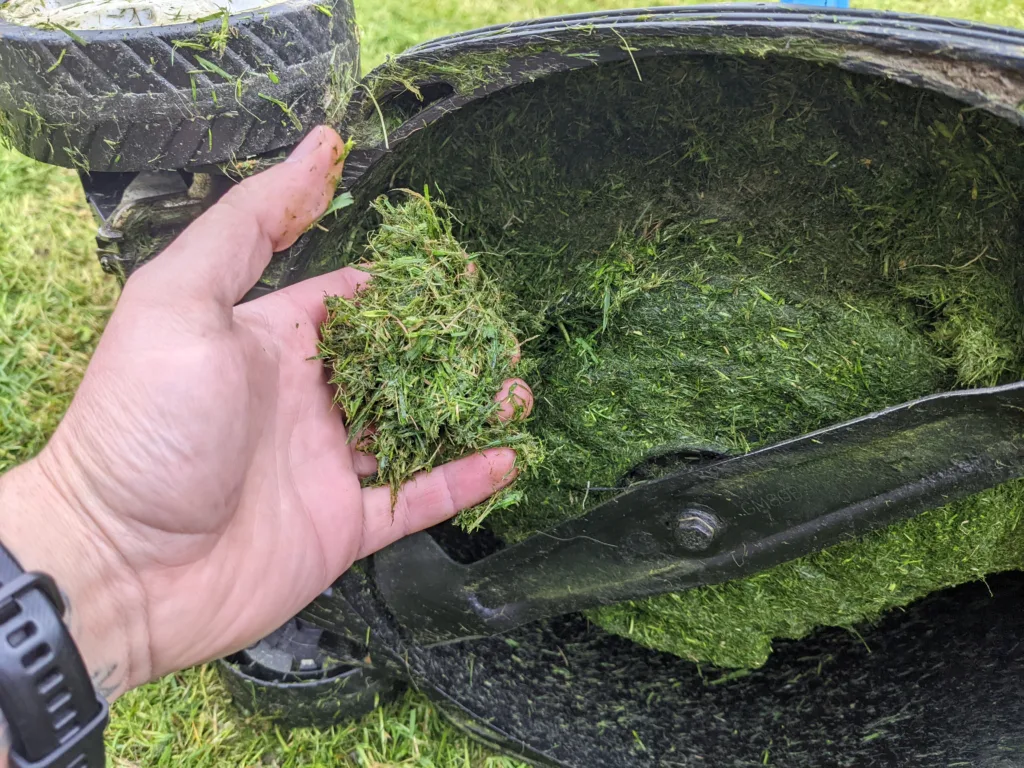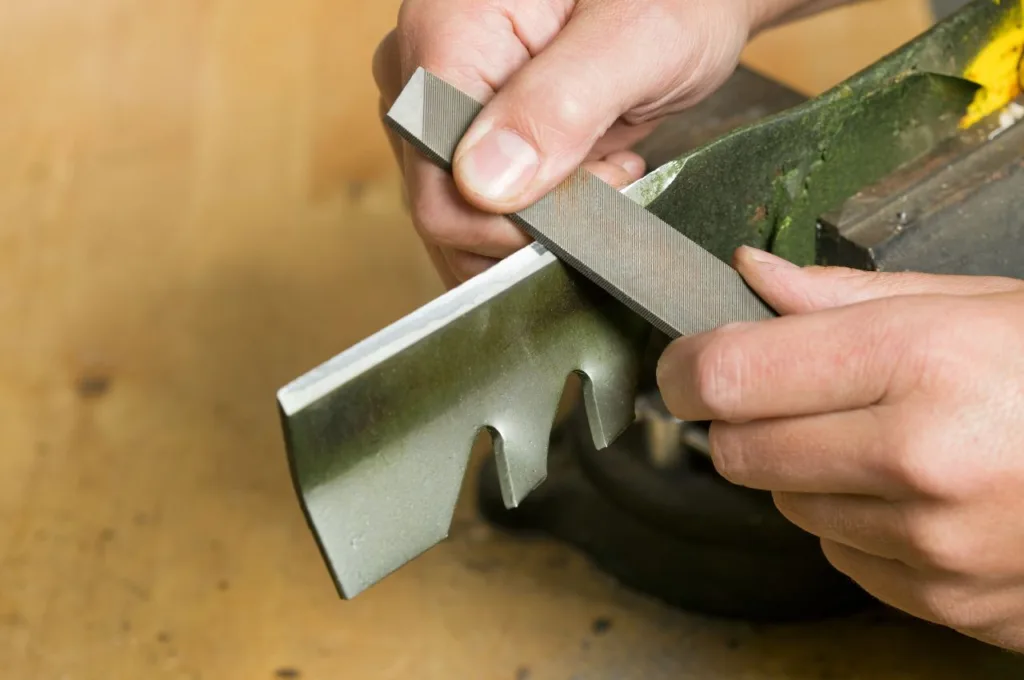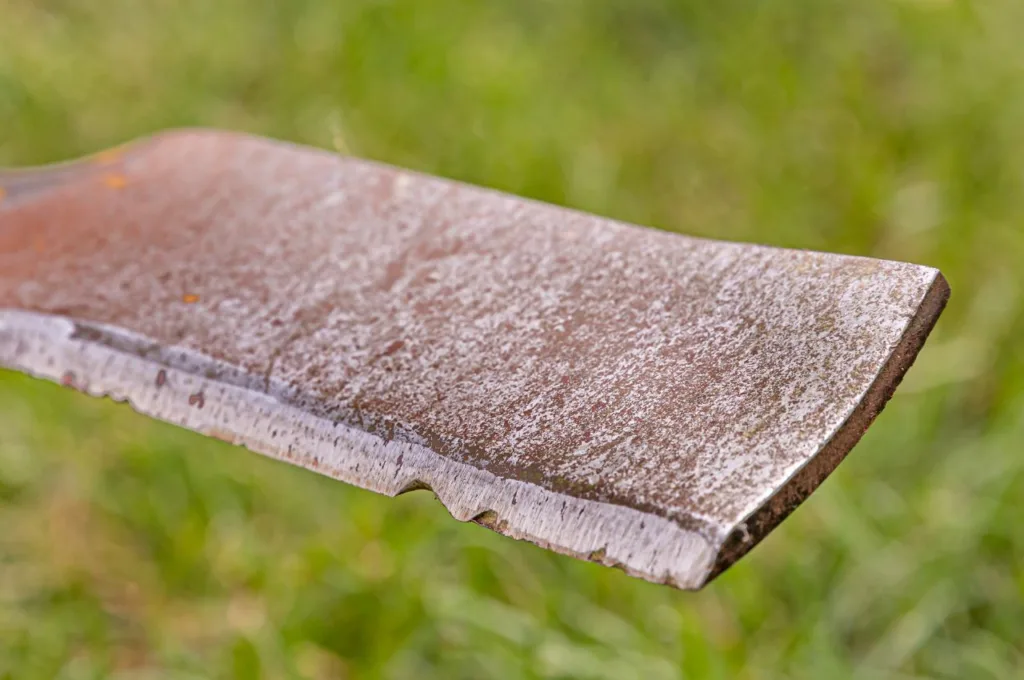If your mulching mower leaves clumps of grass on your lawn, it suggests there’s something wrong with your mower or your mowing habits.
In this guide, we’ve shared the 9 most likely reasons why your mulching mower is leaving grass clumps – and how to resolve these issues.
✅Key Takeaways:
A mulching lawn mower cuts grass into tiny pieces before dispersing them onto the soil, encouraging a healthy, green lawn and eliminating the hassle of emptying a grass catcher.
Some of the reasons why mulching mowers might leave grass clumps are:
Mowing long grass
Cutting off too much grass
Mowing too fast
Clogged decks
Mowing wet grass
Dull blades
Loose mulching plug
Using the wrong blade type
Using a non-mulching lawn mower
You can resolve many of these issues by adjusting your mowing habits, sharpening dull blades, cleaning your mower, and using the right blade/mower type.
Table of Contents
🤷♂️ How Does A Mulching Lawn Mower Work?
Before we look at the possible causes of a mulching mower leaving clumps of grass, we need to understand how this mower type should normally work.
A mulching lawn mower has special mulching blades, which are designed differently from standard blades. They usually have a curved or serrated edge that creates a swirling airflow pattern inside the mower deck, which lifts the grass blades, cutting them multiple times.
When it’s working properly, a mulching lawn mower shouldn’t leave large clumps of grass clippings on your lawn. The grass clippings should be small and evenly distributed across the soil’s surface, allowing them to decompose quickly, rather than lingering on your lawn as piles of yellow, smelly, dying grass.
Related: How Do Mulching Mowers Work?
📑 9 Reasons Why Your Mulching Mower Leaves Clumps Of Grass & How To Resolve
Let’s take a look at the 9 most common reasons why a mulching lawn mower might leave grass clumps rather than mulching the grass clippings properly:
📏 Reason 1: Mowing Long Grass
The longer the grass, the more you’ll mow off to bring it back to the desirable height, and the more mulch will be produced. Even if your lawn mower is working properly, an excess of mulched grass clippings may be fed back onto your lawn in clumps, rather than being evenly distributed.
How To Resolve
Resolving this solution is easy: just make sure to not let your grass grow too long. Ideally, mow the grass when it’s around 5-7 centimetres, before it starts looking long or overgrown. That means mowing your lawn once a week during the height of the grass-growing season (from late spring to late summer).
If you’ve let your grass grow too long, consider switching to your grass catcher to avoid ending up with too many clippings on your lawn.
🤏 Reason 2: Cutting More Than One Third Off Your Grass
Cutting off too much grass is another possible cause of clumping from your mulching lawn mower – even if your lawn isn’t overgrown.
Let’s say your lawn’s grass height is around 7 centimetres. If you set your mower’s cut height too low, and cut off (to use an extreme example!) 5 centimetres of grass, the majority of the grass will end up being mulched, resulting in an excess of grass clippings on your lawn – which could lead to grass clumping.
How To Resolve
Make sure to adjust your mower’s deck height so that you’re only cutting off one-third of your grass, maximum, at a time.
Not only will this prevent clumping, but it’ll also help to keep your lawn healthy. Cutting off too much grass in one go will cause the grass to turn yellow and make it more susceptible to lawn fungus and other grass diseases.
Related: How Long Does It Take For Mulched Grass Clippings To Decompose?
🏁 Reason 3: Mowing Too Fast
Your mulching lawn mower might struggle to keep up with you if you’re mowing too fast. If your mower isn’t mulching properly, it’s possible that you’re pushing it too quickly.
How To Resolve
You need to account for the fact that mowing with a mulching blade is a more time-consuming process than cutting grass with a normal blade. The mulching blades need to cut grass into tiny pieces, which means cycling the grass through the blades several times before they’re deposited.
So the solution here is simple: slow down! Give your mower the time it needs to mulch your grass properly.
🚜 Reason 4: Clogged Mower Deck
A clogged deck will affect your mower’s ability to mulch grass, possibly causing clippings to be ejected sporadically in clumps, or ejected too early before they’ve been cut into shorter grass pieces.
Failing to clean your mower’s deck properly could cause it to become clogged with grass and soil over time, so it can’t mulch properly.
How To Resolve
You can resolve this issue by simply cleaning your mower’s cutting deck.
To clean your mower, lay it on its side and use a scraper tool to remove clumps of dirt and grass. It’s best to do this straight after mowing, before the clumps can solidify and become more difficult to remove.
You can also wash the mower deck with a hose or a pressure washer if it’s safe to do so (don’t do this if you have an electric mulching mower!). Once the mower deck is clean and dry, you should be able to resume mulching properly.

☔️ Reason 5: Mowing Wet Grass
We generally don’t recommend mulching wet grass because the wet clippings will stick together and form clumps. Mowing wet or damp grass is another common reason why a mower leaves clumpy grass rather than mulching properly.
How To Resolve
Don’t mow when the grass is wet unless you have no other choice. We know it’s hard in the UK with our unpredictable weather, but consider how much rain is forecast and try to schedule your mowing for a dry day.
Ideally, wait until later in the day to mow your grass to give the sun a chance to dry grass that’s wet with morning dew. Your lawn will thank you for it, too – mowing wet soil can cause the mower to sink into the ground, damaging the lawn surface.
✂️ Reason 6: Dull Mulching Blade
Dull mulching blades are another common cause of clumps of lawn clippings from your mulching lawn mower.
If your lawn mower blades are dull, they won’t be able to effectively cut grass clippings into small pieces. Overly large clippings are more likely to clump together as they’re ejected from the mower.
How To Resolve
Resolving this issue is simple: sharpen your mulching blades. A sharp blade will cleanly cut grass into tiny pieces, giving you the mulching results you expect to see.
We’ve shared the step-by-step process for sharpening a lawn mower blade in this guide to sharpening mower blades.

♻️ Reason 7: Loose Mulching Plug
If your mulching plug is incorrectly placed or loose, unmulched grass will be able to filter through a gap between the attachment and the mower deck, causing the mower to leave a trail of longer grass clippings as you mow.
How To Resolve
Check your mower’s mulch plug and make sure it’s fitted properly. If not, adjust it so it’s in the right place, and voila! Your grass clumping issue should be resolved.
❌ Reason 8: Using The Wrong Blade Type
You can only mulch grass with a mulching blade. Remember, mulching blades feature a longer cutting edge that allows for maximum contact time with the uncut grass.
So if your mower isn’t mulching properly, it’s possible that you’re using the mower’s generic blade by mistake – it’s easily done!
How To Resolve
Double-check your mower to see if you’re using the mulch plug or attachment. If you’re not, follow the instructions in your user manual to attach this device.

🧐 Reason 9: You Don’t Have A Mulching Mower
Finally, if you’re using a non-mulching lawn mower, don’t be surprised if it’s not mulching properly.
Don’t confuse mulching with rear or side discharge. Rear/side discharge simply discharged normal grass cuttings onto your lawn without cutting them up very small first. This longer grass will likely clump together, and you’ll end up with huge clumps of unmulched clippings on your lawn that take weeks to fully decompose.
How To Resolve
Some conventional lawn mowers have mulching attachments that you can buy as add-ons. This is cheaper than buying a dedicated mulching lawn mower, so check before you spend your money.
Otherwise, if you’re desperate to mulch properly and you don’t currently have a proper mulching lawn mower, you’ll need to invest in one. Mulching mowers allow you to switch between conventional mowing/grass catching and mulching, so you can choose when to mulch depending on the weather, your lawn height, and other circumstances.
💬 Final Word
Thanks for reading this article – we hope it helped you to get to the bottom of your mulching mower issue!
If you liked this article, check out these other mulching lawn mower guides:
